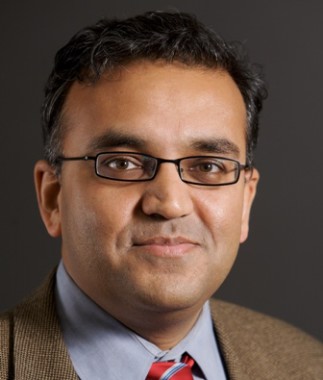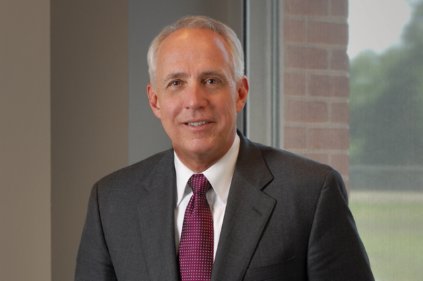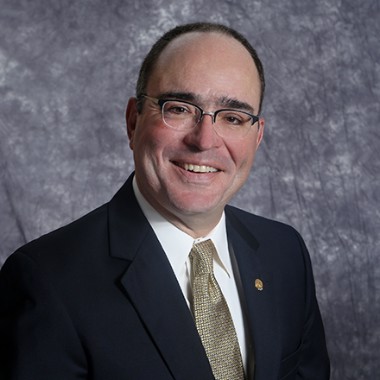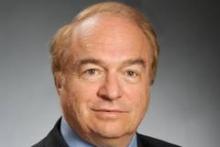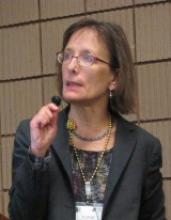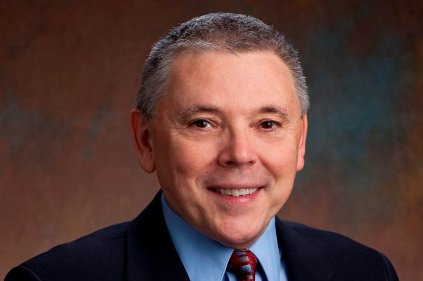User login
Open Payments system back online; physician deadline extended
The Open Payments system is up and running again, and federal officials said the technical glitches that caused data to be linked to the wrong physicians have been fixed.
Physicians and teaching hospitals now have until Sept. 8 to review the payment information submitted to the government by drug, device, and biological manufacturers. Despite the delay, the information is still on track to be publicly released on Sept. 30, according to the Centers for Medicare & Medicaid Services.
The Open Payments Program, created by the Affordable Care Act, aims to add transparency to the financial relationships between the health care industry and physicians and teaching hospitals. But the effort to publish data on industry payments was delayed when CMS learned that some information was being incorrectly matched to physicians. The agency took the site offline on Aug. 3 to investigate.
"CMS takes data integrity very seriously and took swift action after a physician reported a problem," Dr. Shantanu Agrawal, deputy administrator and director of the Center for Program Integrity at CMS, said in a statement. "We have identified the root cause of the problem and have instituted a system fix to prevent similar errors."
Dr. Agrawal urged physicians to review their records before the Sept. 8 deadline to identify any potential errors.
The CMS investigation found that manufacturers and group purchasing organizations had submitted intermingled data, adding the wrong state license number or national provider identifier for physicians with the same first and last names. The agency implemented "system fixes," removed the inaccurate data, and revalidated the information.
Since the website used for physicians and teaching hospital to review their data was offline for several days, CMS has extended the deadline for reviewing and disputing data from Aug. 27 to Sept. 8.
On Twitter @maryellenny
The Open Payments system is up and running again, and federal officials said the technical glitches that caused data to be linked to the wrong physicians have been fixed.
Physicians and teaching hospitals now have until Sept. 8 to review the payment information submitted to the government by drug, device, and biological manufacturers. Despite the delay, the information is still on track to be publicly released on Sept. 30, according to the Centers for Medicare & Medicaid Services.
The Open Payments Program, created by the Affordable Care Act, aims to add transparency to the financial relationships between the health care industry and physicians and teaching hospitals. But the effort to publish data on industry payments was delayed when CMS learned that some information was being incorrectly matched to physicians. The agency took the site offline on Aug. 3 to investigate.
"CMS takes data integrity very seriously and took swift action after a physician reported a problem," Dr. Shantanu Agrawal, deputy administrator and director of the Center for Program Integrity at CMS, said in a statement. "We have identified the root cause of the problem and have instituted a system fix to prevent similar errors."
Dr. Agrawal urged physicians to review their records before the Sept. 8 deadline to identify any potential errors.
The CMS investigation found that manufacturers and group purchasing organizations had submitted intermingled data, adding the wrong state license number or national provider identifier for physicians with the same first and last names. The agency implemented "system fixes," removed the inaccurate data, and revalidated the information.
Since the website used for physicians and teaching hospital to review their data was offline for several days, CMS has extended the deadline for reviewing and disputing data from Aug. 27 to Sept. 8.
On Twitter @maryellenny
The Open Payments system is up and running again, and federal officials said the technical glitches that caused data to be linked to the wrong physicians have been fixed.
Physicians and teaching hospitals now have until Sept. 8 to review the payment information submitted to the government by drug, device, and biological manufacturers. Despite the delay, the information is still on track to be publicly released on Sept. 30, according to the Centers for Medicare & Medicaid Services.
The Open Payments Program, created by the Affordable Care Act, aims to add transparency to the financial relationships between the health care industry and physicians and teaching hospitals. But the effort to publish data on industry payments was delayed when CMS learned that some information was being incorrectly matched to physicians. The agency took the site offline on Aug. 3 to investigate.
"CMS takes data integrity very seriously and took swift action after a physician reported a problem," Dr. Shantanu Agrawal, deputy administrator and director of the Center for Program Integrity at CMS, said in a statement. "We have identified the root cause of the problem and have instituted a system fix to prevent similar errors."
Dr. Agrawal urged physicians to review their records before the Sept. 8 deadline to identify any potential errors.
The CMS investigation found that manufacturers and group purchasing organizations had submitted intermingled data, adding the wrong state license number or national provider identifier for physicians with the same first and last names. The agency implemented "system fixes," removed the inaccurate data, and revalidated the information.
Since the website used for physicians and teaching hospital to review their data was offline for several days, CMS has extended the deadline for reviewing and disputing data from Aug. 27 to Sept. 8.
On Twitter @maryellenny
Tech problems stall Open Payments Program
The Open Payments system has been temporarily taken offline because of technical glitches that have called into question the accuracy of reported data.
"After an assessment of the data resulting from a complaint, we discovered that a limited number of physician payment records submitted by at least one manufacturer incorrectly contained information about other physicians," officials at the Centers for Medicare & Medicaid Services said in a statement. "CMS takes physician privacy very seriously and we have taken the system offline temporarily and will work with the industry to eliminate incorrect payment records."
The Open Payments Program, created under the Affordable Care Act, aims to increase transparency about financial relationships between the drug, device, and biological industry and physicians and teaching hospitals. Under the program, the industry reports payment data, which can be reviewed and disputed by physicians and teaching hospitals. The goal was for the agency to release the data to the public on Sept. 30.
Agency officials first took the website offline on Aug. 3. On Aug. 7, CMS officials sent an e-mail announcing that physicians and representatives from teaching hospitals would be unable to register or review data while the system was offline. Officials pledged that for each day the system was offline, the agency would accordingly adjust the deadlines for reviews and disputes, and the following 15-day corrections period.
Agency officials found that at least one manufacturer submitted incorrect data by matching the name, address, and National Provider Identifier of a physician with the wrong state medical license. Though the medical license was valid, it belonged to another physician with the same first and last names.
Once that information was entered into the Open Payments website, the system combined the data, allowing one of the physicians to see all the payments, including those made to the other physician.
CMS officials contend the problem is limited to a small number of physicians, but in an effort to keep physicians from viewing another provider’s information, they are temporarily suspending registration in the program and the ability to review data. They have not announced an estimate for when the system will be back online.
On Twitter @maryellenny
The Open Payments system has been temporarily taken offline because of technical glitches that have called into question the accuracy of reported data.
"After an assessment of the data resulting from a complaint, we discovered that a limited number of physician payment records submitted by at least one manufacturer incorrectly contained information about other physicians," officials at the Centers for Medicare & Medicaid Services said in a statement. "CMS takes physician privacy very seriously and we have taken the system offline temporarily and will work with the industry to eliminate incorrect payment records."
The Open Payments Program, created under the Affordable Care Act, aims to increase transparency about financial relationships between the drug, device, and biological industry and physicians and teaching hospitals. Under the program, the industry reports payment data, which can be reviewed and disputed by physicians and teaching hospitals. The goal was for the agency to release the data to the public on Sept. 30.
Agency officials first took the website offline on Aug. 3. On Aug. 7, CMS officials sent an e-mail announcing that physicians and representatives from teaching hospitals would be unable to register or review data while the system was offline. Officials pledged that for each day the system was offline, the agency would accordingly adjust the deadlines for reviews and disputes, and the following 15-day corrections period.
Agency officials found that at least one manufacturer submitted incorrect data by matching the name, address, and National Provider Identifier of a physician with the wrong state medical license. Though the medical license was valid, it belonged to another physician with the same first and last names.
Once that information was entered into the Open Payments website, the system combined the data, allowing one of the physicians to see all the payments, including those made to the other physician.
CMS officials contend the problem is limited to a small number of physicians, but in an effort to keep physicians from viewing another provider’s information, they are temporarily suspending registration in the program and the ability to review data. They have not announced an estimate for when the system will be back online.
On Twitter @maryellenny
The Open Payments system has been temporarily taken offline because of technical glitches that have called into question the accuracy of reported data.
"After an assessment of the data resulting from a complaint, we discovered that a limited number of physician payment records submitted by at least one manufacturer incorrectly contained information about other physicians," officials at the Centers for Medicare & Medicaid Services said in a statement. "CMS takes physician privacy very seriously and we have taken the system offline temporarily and will work with the industry to eliminate incorrect payment records."
The Open Payments Program, created under the Affordable Care Act, aims to increase transparency about financial relationships between the drug, device, and biological industry and physicians and teaching hospitals. Under the program, the industry reports payment data, which can be reviewed and disputed by physicians and teaching hospitals. The goal was for the agency to release the data to the public on Sept. 30.
Agency officials first took the website offline on Aug. 3. On Aug. 7, CMS officials sent an e-mail announcing that physicians and representatives from teaching hospitals would be unable to register or review data while the system was offline. Officials pledged that for each day the system was offline, the agency would accordingly adjust the deadlines for reviews and disputes, and the following 15-day corrections period.
Agency officials found that at least one manufacturer submitted incorrect data by matching the name, address, and National Provider Identifier of a physician with the wrong state medical license. Though the medical license was valid, it belonged to another physician with the same first and last names.
Once that information was entered into the Open Payments website, the system combined the data, allowing one of the physicians to see all the payments, including those made to the other physician.
CMS officials contend the problem is limited to a small number of physicians, but in an effort to keep physicians from viewing another provider’s information, they are temporarily suspending registration in the program and the ability to review data. They have not announced an estimate for when the system will be back online.
On Twitter @maryellenny
Deadline nears to dispute industry payment data
Physicians and teaching hospitals have until Aug. 27 to review and dispute payment data from drug, device, and biological manufacturers under the federal government’s new Open Payments Program. But recent technical problems with the online system could push that deadline back by a few days.
The Centers for Medicare & Medicaid Services had been scheduled to publish information on industry payments to physicians and teaching hospitals on Sept. 30 as part of the new transparency initiative created under the Affordable Care Act.
On Aug. 7, CMS announced that the Open Payments website had been taken offline temporarily and that physicians and other providers would not be able to review data until the system was again operational. For each day that the system is offline, CMS said it will accordingly adjust the review and dispute deadline.
CMS did not explain why the system had to be taken offline, but Dr. Robert M. Wah, president of the American Medical Association, said in an interview that CMS officials had discovered earlier in the week a problem in which a manufacturer had attributed payment data to the wrong physician.
While CMS is planning for a small delay because of the technical problems, the AMA and more than 100 specialty and state medical societies are pushing for a 6-month delay on the public release of the payment data, a move that would change the scheduled publication date to March 31, 2015.
In an Aug. 5 letter to CMS, the AMA and the other organizations wrote that while they have "no issue" with efforts to increase transparency in the interactions between physicians and industry, they do have "serious concerns" about the implementation of the program.
A top concern for the groups is the length and complexity of the registration process required for physicians and teaching hospitals to access their data in the Open Payments systems.
CMS officials have told physicians to expect to spend 30-45 minutes to complete a 5-step registration process. But the AMA and the other societies contend that the process is much more involved. They estimate that after the initial preregistration step to verify a physician’s identify, there are another 11 steps in the registration process. And reviewing and disputing data is another 5 steps, they wrote.
"What we’re hearing from physicians is [that] this process is extremely time consuming and difficult," Dr. Wah said. "The user guide to go through this multistep process is 359 pages long. And the time that it’s taking people is in the hours, not minutes, to get through it."
The complexity of the process makes it "effectively impossible" for physicians to review and dispute payment data within the July 14-Aug. 27 window provided by CMS, the organizations wrote in their letter. After Aug. 27, physicians and teaching hospitals can continue to dispute data, but any subsequent corrections would not be reflected in the first publication of data on Sept. 30.
The groups also noted that many physicians are not aware of the program or its deadlines. The medical societies wrote that CMS has not done an adequate job of notifying physicians about the need to review their data. Further, delays by the government in setting a date for physicians to register for the program have made it difficult for medical societies to get information out to their members.
"It takes time to get the word out about these kinds of things, even in our electronically connected world," Dr. Wah said.
On Twitter @maryellenny
Physicians and teaching hospitals have until Aug. 27 to review and dispute payment data from drug, device, and biological manufacturers under the federal government’s new Open Payments Program. But recent technical problems with the online system could push that deadline back by a few days.
The Centers for Medicare & Medicaid Services had been scheduled to publish information on industry payments to physicians and teaching hospitals on Sept. 30 as part of the new transparency initiative created under the Affordable Care Act.
On Aug. 7, CMS announced that the Open Payments website had been taken offline temporarily and that physicians and other providers would not be able to review data until the system was again operational. For each day that the system is offline, CMS said it will accordingly adjust the review and dispute deadline.
CMS did not explain why the system had to be taken offline, but Dr. Robert M. Wah, president of the American Medical Association, said in an interview that CMS officials had discovered earlier in the week a problem in which a manufacturer had attributed payment data to the wrong physician.
While CMS is planning for a small delay because of the technical problems, the AMA and more than 100 specialty and state medical societies are pushing for a 6-month delay on the public release of the payment data, a move that would change the scheduled publication date to March 31, 2015.
In an Aug. 5 letter to CMS, the AMA and the other organizations wrote that while they have "no issue" with efforts to increase transparency in the interactions between physicians and industry, they do have "serious concerns" about the implementation of the program.
A top concern for the groups is the length and complexity of the registration process required for physicians and teaching hospitals to access their data in the Open Payments systems.
CMS officials have told physicians to expect to spend 30-45 minutes to complete a 5-step registration process. But the AMA and the other societies contend that the process is much more involved. They estimate that after the initial preregistration step to verify a physician’s identify, there are another 11 steps in the registration process. And reviewing and disputing data is another 5 steps, they wrote.
"What we’re hearing from physicians is [that] this process is extremely time consuming and difficult," Dr. Wah said. "The user guide to go through this multistep process is 359 pages long. And the time that it’s taking people is in the hours, not minutes, to get through it."
The complexity of the process makes it "effectively impossible" for physicians to review and dispute payment data within the July 14-Aug. 27 window provided by CMS, the organizations wrote in their letter. After Aug. 27, physicians and teaching hospitals can continue to dispute data, but any subsequent corrections would not be reflected in the first publication of data on Sept. 30.
The groups also noted that many physicians are not aware of the program or its deadlines. The medical societies wrote that CMS has not done an adequate job of notifying physicians about the need to review their data. Further, delays by the government in setting a date for physicians to register for the program have made it difficult for medical societies to get information out to their members.
"It takes time to get the word out about these kinds of things, even in our electronically connected world," Dr. Wah said.
On Twitter @maryellenny
Physicians and teaching hospitals have until Aug. 27 to review and dispute payment data from drug, device, and biological manufacturers under the federal government’s new Open Payments Program. But recent technical problems with the online system could push that deadline back by a few days.
The Centers for Medicare & Medicaid Services had been scheduled to publish information on industry payments to physicians and teaching hospitals on Sept. 30 as part of the new transparency initiative created under the Affordable Care Act.
On Aug. 7, CMS announced that the Open Payments website had been taken offline temporarily and that physicians and other providers would not be able to review data until the system was again operational. For each day that the system is offline, CMS said it will accordingly adjust the review and dispute deadline.
CMS did not explain why the system had to be taken offline, but Dr. Robert M. Wah, president of the American Medical Association, said in an interview that CMS officials had discovered earlier in the week a problem in which a manufacturer had attributed payment data to the wrong physician.
While CMS is planning for a small delay because of the technical problems, the AMA and more than 100 specialty and state medical societies are pushing for a 6-month delay on the public release of the payment data, a move that would change the scheduled publication date to March 31, 2015.
In an Aug. 5 letter to CMS, the AMA and the other organizations wrote that while they have "no issue" with efforts to increase transparency in the interactions between physicians and industry, they do have "serious concerns" about the implementation of the program.
A top concern for the groups is the length and complexity of the registration process required for physicians and teaching hospitals to access their data in the Open Payments systems.
CMS officials have told physicians to expect to spend 30-45 minutes to complete a 5-step registration process. But the AMA and the other societies contend that the process is much more involved. They estimate that after the initial preregistration step to verify a physician’s identify, there are another 11 steps in the registration process. And reviewing and disputing data is another 5 steps, they wrote.
"What we’re hearing from physicians is [that] this process is extremely time consuming and difficult," Dr. Wah said. "The user guide to go through this multistep process is 359 pages long. And the time that it’s taking people is in the hours, not minutes, to get through it."
The complexity of the process makes it "effectively impossible" for physicians to review and dispute payment data within the July 14-Aug. 27 window provided by CMS, the organizations wrote in their letter. After Aug. 27, physicians and teaching hospitals can continue to dispute data, but any subsequent corrections would not be reflected in the first publication of data on Sept. 30.
The groups also noted that many physicians are not aware of the program or its deadlines. The medical societies wrote that CMS has not done an adequate job of notifying physicians about the need to review their data. Further, delays by the government in setting a date for physicians to register for the program have made it difficult for medical societies to get information out to their members.
"It takes time to get the word out about these kinds of things, even in our electronically connected world," Dr. Wah said.
On Twitter @maryellenny
Experts See Larger Role for CDC in Preventing Hospital Deaths
The Centers for Disease Control and Prevention, which has lately been under attack for mishandling infectious disease samples, got a vote of confidence from patient safety experts.
At a July 17 hearing of the Primary Health and Aging Subcommittee of the Senate Health, Education, Labor and Pensions Committee, patient safety advocates and physicians called on Congress to get the CDC more involved in tracking and reporting on all forms of preventable harm that occur in the hospital.
The agency already monitors and reports on health care–associated infections such as catheter-associated urinary tract infections and surgical site infections. But the CDC also should be enlisted to help hospitals in other areas where they currently lack a good surveillance system, including venous thromboembolism and medication errors, experts testified.
"We need to expand the efforts of the CDC," said Dr. Ashish Jha, professor of health policy and management at the Harvard School of Public Health. "There is no reason to think that what they have been able to do around health care associated infections, they can’t do in other areas."
As many as 440,000 patients die of preventable errors in U.S. hospitals, according to most recent estimates (J. Pat. Safety 2013;9:122-8 [doi: 10.1097/PTS.0b013e3182948a69]).
About 180,000 Medicare patients likely die each year from preventable adverse events in the hospital, according to a 2010 report from the U.S. Department of Health & Human Services.
Those numbers may seem daunting, but the experts testified that there are plenty of policy steps the government can take to aid physicians and hospitals in tackling the problem.
Creating standards for reporting health care quality and cost measures, similar to the standards for the financial industry created under the Security and Exchange Act, would be a good place to start, said Dr. Peter Pronovost, senior vice president for patient safety and quality at Johns Hopkins Medicine in Baltimore.
"Right now we have no guarantee that the measures that we’re reporting are accurate," said Dr. Pronovost, who spearheaded a checklist protocol that led has resulted in significantly lower rates of central line associated bloodstream infections. "Johns Hopkins Hospital was both congratulated and criticized for its performance on the exact same measure for the exact same time period for bloodstream infections. And when we looked, the one we’re paid on, using administrative data, got it right 13% of the time."
Billing data isn’t adequate for this type of reporting, he said.
Experts at the hearing also called on Congress to help make safety a priority for hospitals by beefing up penalties for errors.
Lisa McGiffert, director of the Safe Patient Project at Consumers Union, said Medicare needs to put more financial pressure on hospitals. Under Medicare’s Hospital-Acquired Conditions payment program, the government withholds payment for hospitalizations in which certain preventable errors occur. But Ms. McGiffert said that policy doesn’t go far enough. The hospital should be responsible for the full range of follow-up care that results from the original adverse event, including physician visits, rehospitalizations, and medications, she said.
Dr. Pronovost said Medicare and the Joint Commission could also use their existing authority to sanction hospitals that have infection rates that are consistently above the national average. But he cautioned that regulators should only exercise this authority in areas where there is good data and validated measures, such as central line associated bloodstream infections.
CEO compensation also plays a role, said Dr. Jha, who has researched this issue among nonprofit hospitals. Right now, patient safety is typically not one of the factors influencing how CEOs at nonprofit hospital are paid, he said.
"Until we get to a point where the CEO of the hospital is lying awake at night worrying about patient safety, I don’t think we’re going to really meaningfully move the needle," Dr. Jha said.
On Twitter @maryellenny
The Centers for Disease Control and Prevention, which has lately been under attack for mishandling infectious disease samples, got a vote of confidence from patient safety experts.
At a July 17 hearing of the Primary Health and Aging Subcommittee of the Senate Health, Education, Labor and Pensions Committee, patient safety advocates and physicians called on Congress to get the CDC more involved in tracking and reporting on all forms of preventable harm that occur in the hospital.
The agency already monitors and reports on health care–associated infections such as catheter-associated urinary tract infections and surgical site infections. But the CDC also should be enlisted to help hospitals in other areas where they currently lack a good surveillance system, including venous thromboembolism and medication errors, experts testified.
"We need to expand the efforts of the CDC," said Dr. Ashish Jha, professor of health policy and management at the Harvard School of Public Health. "There is no reason to think that what they have been able to do around health care associated infections, they can’t do in other areas."
As many as 440,000 patients die of preventable errors in U.S. hospitals, according to most recent estimates (J. Pat. Safety 2013;9:122-8 [doi: 10.1097/PTS.0b013e3182948a69]).
About 180,000 Medicare patients likely die each year from preventable adverse events in the hospital, according to a 2010 report from the U.S. Department of Health & Human Services.
Those numbers may seem daunting, but the experts testified that there are plenty of policy steps the government can take to aid physicians and hospitals in tackling the problem.
Creating standards for reporting health care quality and cost measures, similar to the standards for the financial industry created under the Security and Exchange Act, would be a good place to start, said Dr. Peter Pronovost, senior vice president for patient safety and quality at Johns Hopkins Medicine in Baltimore.
"Right now we have no guarantee that the measures that we’re reporting are accurate," said Dr. Pronovost, who spearheaded a checklist protocol that led has resulted in significantly lower rates of central line associated bloodstream infections. "Johns Hopkins Hospital was both congratulated and criticized for its performance on the exact same measure for the exact same time period for bloodstream infections. And when we looked, the one we’re paid on, using administrative data, got it right 13% of the time."
Billing data isn’t adequate for this type of reporting, he said.
Experts at the hearing also called on Congress to help make safety a priority for hospitals by beefing up penalties for errors.
Lisa McGiffert, director of the Safe Patient Project at Consumers Union, said Medicare needs to put more financial pressure on hospitals. Under Medicare’s Hospital-Acquired Conditions payment program, the government withholds payment for hospitalizations in which certain preventable errors occur. But Ms. McGiffert said that policy doesn’t go far enough. The hospital should be responsible for the full range of follow-up care that results from the original adverse event, including physician visits, rehospitalizations, and medications, she said.
Dr. Pronovost said Medicare and the Joint Commission could also use their existing authority to sanction hospitals that have infection rates that are consistently above the national average. But he cautioned that regulators should only exercise this authority in areas where there is good data and validated measures, such as central line associated bloodstream infections.
CEO compensation also plays a role, said Dr. Jha, who has researched this issue among nonprofit hospitals. Right now, patient safety is typically not one of the factors influencing how CEOs at nonprofit hospital are paid, he said.
"Until we get to a point where the CEO of the hospital is lying awake at night worrying about patient safety, I don’t think we’re going to really meaningfully move the needle," Dr. Jha said.
On Twitter @maryellenny
The Centers for Disease Control and Prevention, which has lately been under attack for mishandling infectious disease samples, got a vote of confidence from patient safety experts.
At a July 17 hearing of the Primary Health and Aging Subcommittee of the Senate Health, Education, Labor and Pensions Committee, patient safety advocates and physicians called on Congress to get the CDC more involved in tracking and reporting on all forms of preventable harm that occur in the hospital.
The agency already monitors and reports on health care–associated infections such as catheter-associated urinary tract infections and surgical site infections. But the CDC also should be enlisted to help hospitals in other areas where they currently lack a good surveillance system, including venous thromboembolism and medication errors, experts testified.
"We need to expand the efforts of the CDC," said Dr. Ashish Jha, professor of health policy and management at the Harvard School of Public Health. "There is no reason to think that what they have been able to do around health care associated infections, they can’t do in other areas."
As many as 440,000 patients die of preventable errors in U.S. hospitals, according to most recent estimates (J. Pat. Safety 2013;9:122-8 [doi: 10.1097/PTS.0b013e3182948a69]).
About 180,000 Medicare patients likely die each year from preventable adverse events in the hospital, according to a 2010 report from the U.S. Department of Health & Human Services.
Those numbers may seem daunting, but the experts testified that there are plenty of policy steps the government can take to aid physicians and hospitals in tackling the problem.
Creating standards for reporting health care quality and cost measures, similar to the standards for the financial industry created under the Security and Exchange Act, would be a good place to start, said Dr. Peter Pronovost, senior vice president for patient safety and quality at Johns Hopkins Medicine in Baltimore.
"Right now we have no guarantee that the measures that we’re reporting are accurate," said Dr. Pronovost, who spearheaded a checklist protocol that led has resulted in significantly lower rates of central line associated bloodstream infections. "Johns Hopkins Hospital was both congratulated and criticized for its performance on the exact same measure for the exact same time period for bloodstream infections. And when we looked, the one we’re paid on, using administrative data, got it right 13% of the time."
Billing data isn’t adequate for this type of reporting, he said.
Experts at the hearing also called on Congress to help make safety a priority for hospitals by beefing up penalties for errors.
Lisa McGiffert, director of the Safe Patient Project at Consumers Union, said Medicare needs to put more financial pressure on hospitals. Under Medicare’s Hospital-Acquired Conditions payment program, the government withholds payment for hospitalizations in which certain preventable errors occur. But Ms. McGiffert said that policy doesn’t go far enough. The hospital should be responsible for the full range of follow-up care that results from the original adverse event, including physician visits, rehospitalizations, and medications, she said.
Dr. Pronovost said Medicare and the Joint Commission could also use their existing authority to sanction hospitals that have infection rates that are consistently above the national average. But he cautioned that regulators should only exercise this authority in areas where there is good data and validated measures, such as central line associated bloodstream infections.
CEO compensation also plays a role, said Dr. Jha, who has researched this issue among nonprofit hospitals. Right now, patient safety is typically not one of the factors influencing how CEOs at nonprofit hospital are paid, he said.
"Until we get to a point where the CEO of the hospital is lying awake at night worrying about patient safety, I don’t think we’re going to really meaningfully move the needle," Dr. Jha said.
On Twitter @maryellenny
FROM A SENATE COMMITTEE HEARING
CMS finalizes plan to cut hospital payments, move ahead with two-midnight policy
Medicare payments to general acute care hospitals will drop by more than $750 million over the next year, and the controversial two-midnight policy will move forward as scheduled, according to a new federal regulation.
On Aug. 4, the Centers for Medicare & Medicaid Services released the final rule governing payment policies for general acute care hospitals and long term care hospitals for fiscal year 2015, which begins on Oct. 1, 2014.
While Medicare will increase the payment rate for general acute care hospitals by 1.4% in fiscal year 2015, a combination of policy changes and penalties under quality programs will actually decrease payments overall by 0.6%, or about a $756 million drop in Medicare spending on inpatient hospital services overall, according to CMS. In contrast, CMS projects that payments to long-term-care hospitals will rise by about 1.1% in fiscal year 2015.
"Today’s policies further support our efforts to continue improving the care our Medicare beneficiaries receive while also cutting the growth of Medicare costs," Marilyn Tavenner, CMS administrator, said in a statement. "This final rule builds on our recent efforts to improve hospital performance while giving hospitals the clarity and resources they need to deliver the best possible patient care."
The final inpatient hospital payment rule does not make changes to the controversial two-midnight policy released by Medicare officials last year. Under the rule, the decision to admit a Medicare patient as an inpatient depends on two factors: whether the condition meets medical necessity requiring a patient to be in a hospital setting and the expectation that their time in the hospital will surpass two midnights.
The two-midnight policy technically went into effect on Oct. 1, 2013, but enforcement through postpayment claims audits by Recovery Audit Contractors has been delayed until March 31, 2015. In the meantime, Medicare Administrative Contractors have been performing prepayment reviews on samples of short-stay inpatient claims to determine hospital compliance with the new policy.
In the final inpatient hospital rule, CMS officials said that they will spend the summer and fall of 2014 to evaluate the results of the prepayment reviews and issue additional guidance on the application of the policy. The agency is also accepting suggestions for exceptions to the two-midnight policy at [email protected].
The Association of American Medical Colleges criticized CMS for failing to either revise or replace the two-midnight policy in this most recent round of rulemaking.
The current policy "continues to ignore physicians’ medical judgment, results in inadequate reimbursement to hospitals for medically necessary care, and creates confusion and new financial liabilities for Medicare beneficiaries," Dr. Darrell G. Kirch, AAMC president and CEO, said in a statement.
Dr. Kirch called on CMS to issue supplemental guidance that would allow hospitals to bill certain short stays as inpatient, under Medicare Part A, when the physician determines that the stay is medically necessary. He also urged the agency to suspend the prepayment reviews being conducted by Medicare Administrative Contractors until the policy is either revised or replaced.
Dr. Bradley Flansbaum, a hospitalist at Lenox Hill Hospital in New York and a member of the Society of Hospital Medicine’s public policy committee, said he thinks CMS could still make changes to the two-midnight policy, despite the lack of action in the recently released inpatient payment rule.
"CMS sees the delay as a cooling off and retrenchment period. They know the two-midnight rule and auditing practice have raised the hackles of many folks," he said. "Business as usual won’t return, and I am pretty certain we will see changes, both in how we make observation determinations and in the payment and surveillance process."
In a proposed rule issued earlier this year, CMS raised the possibility of creating a new payment method under Medicare for short, but intensive inpatient hospital stays. The final rule summarized some of the public comments received so far, but did not propose any new policies.
The inpatient hospital payment rule also contains updates for several of Medicare’s quality improvement programs, including increasing the penalties for hospitals that perform poorly on the measures.
Starting Oct. 1, 2014, hospitals will be subject to a 3% penalty on their Medicare payments if they have high readmission rates for acute myocardial infarction, heart failure, pneumonia, chronic obstructive pulmonary disease, and hip/knee arthroplasty. Starting in October 2016, CMS will add another measure to the Hospital Readmissions Reduction Program: coronary artery bypass graft surgical procedures.
The inpatient payment rule also makes changes to the Hospital Value-Based Purchasing Program. For fiscal year 2015, the penalty will rise to 1.5% of base operating DRG payment amounts to all participating hospitals. CMS estimates that there will be about $1.4 billion available for value-based incentive payments in fiscal year 2015.
On Twitter @maryellenny
Medicare payments to general acute care hospitals will drop by more than $750 million over the next year, and the controversial two-midnight policy will move forward as scheduled, according to a new federal regulation.
On Aug. 4, the Centers for Medicare & Medicaid Services released the final rule governing payment policies for general acute care hospitals and long term care hospitals for fiscal year 2015, which begins on Oct. 1, 2014.
While Medicare will increase the payment rate for general acute care hospitals by 1.4% in fiscal year 2015, a combination of policy changes and penalties under quality programs will actually decrease payments overall by 0.6%, or about a $756 million drop in Medicare spending on inpatient hospital services overall, according to CMS. In contrast, CMS projects that payments to long-term-care hospitals will rise by about 1.1% in fiscal year 2015.
"Today’s policies further support our efforts to continue improving the care our Medicare beneficiaries receive while also cutting the growth of Medicare costs," Marilyn Tavenner, CMS administrator, said in a statement. "This final rule builds on our recent efforts to improve hospital performance while giving hospitals the clarity and resources they need to deliver the best possible patient care."
The final inpatient hospital payment rule does not make changes to the controversial two-midnight policy released by Medicare officials last year. Under the rule, the decision to admit a Medicare patient as an inpatient depends on two factors: whether the condition meets medical necessity requiring a patient to be in a hospital setting and the expectation that their time in the hospital will surpass two midnights.
The two-midnight policy technically went into effect on Oct. 1, 2013, but enforcement through postpayment claims audits by Recovery Audit Contractors has been delayed until March 31, 2015. In the meantime, Medicare Administrative Contractors have been performing prepayment reviews on samples of short-stay inpatient claims to determine hospital compliance with the new policy.
In the final inpatient hospital rule, CMS officials said that they will spend the summer and fall of 2014 to evaluate the results of the prepayment reviews and issue additional guidance on the application of the policy. The agency is also accepting suggestions for exceptions to the two-midnight policy at [email protected].
The Association of American Medical Colleges criticized CMS for failing to either revise or replace the two-midnight policy in this most recent round of rulemaking.
The current policy "continues to ignore physicians’ medical judgment, results in inadequate reimbursement to hospitals for medically necessary care, and creates confusion and new financial liabilities for Medicare beneficiaries," Dr. Darrell G. Kirch, AAMC president and CEO, said in a statement.
Dr. Kirch called on CMS to issue supplemental guidance that would allow hospitals to bill certain short stays as inpatient, under Medicare Part A, when the physician determines that the stay is medically necessary. He also urged the agency to suspend the prepayment reviews being conducted by Medicare Administrative Contractors until the policy is either revised or replaced.
Dr. Bradley Flansbaum, a hospitalist at Lenox Hill Hospital in New York and a member of the Society of Hospital Medicine’s public policy committee, said he thinks CMS could still make changes to the two-midnight policy, despite the lack of action in the recently released inpatient payment rule.
"CMS sees the delay as a cooling off and retrenchment period. They know the two-midnight rule and auditing practice have raised the hackles of many folks," he said. "Business as usual won’t return, and I am pretty certain we will see changes, both in how we make observation determinations and in the payment and surveillance process."
In a proposed rule issued earlier this year, CMS raised the possibility of creating a new payment method under Medicare for short, but intensive inpatient hospital stays. The final rule summarized some of the public comments received so far, but did not propose any new policies.
The inpatient hospital payment rule also contains updates for several of Medicare’s quality improvement programs, including increasing the penalties for hospitals that perform poorly on the measures.
Starting Oct. 1, 2014, hospitals will be subject to a 3% penalty on their Medicare payments if they have high readmission rates for acute myocardial infarction, heart failure, pneumonia, chronic obstructive pulmonary disease, and hip/knee arthroplasty. Starting in October 2016, CMS will add another measure to the Hospital Readmissions Reduction Program: coronary artery bypass graft surgical procedures.
The inpatient payment rule also makes changes to the Hospital Value-Based Purchasing Program. For fiscal year 2015, the penalty will rise to 1.5% of base operating DRG payment amounts to all participating hospitals. CMS estimates that there will be about $1.4 billion available for value-based incentive payments in fiscal year 2015.
On Twitter @maryellenny
Medicare payments to general acute care hospitals will drop by more than $750 million over the next year, and the controversial two-midnight policy will move forward as scheduled, according to a new federal regulation.
On Aug. 4, the Centers for Medicare & Medicaid Services released the final rule governing payment policies for general acute care hospitals and long term care hospitals for fiscal year 2015, which begins on Oct. 1, 2014.
While Medicare will increase the payment rate for general acute care hospitals by 1.4% in fiscal year 2015, a combination of policy changes and penalties under quality programs will actually decrease payments overall by 0.6%, or about a $756 million drop in Medicare spending on inpatient hospital services overall, according to CMS. In contrast, CMS projects that payments to long-term-care hospitals will rise by about 1.1% in fiscal year 2015.
"Today’s policies further support our efforts to continue improving the care our Medicare beneficiaries receive while also cutting the growth of Medicare costs," Marilyn Tavenner, CMS administrator, said in a statement. "This final rule builds on our recent efforts to improve hospital performance while giving hospitals the clarity and resources they need to deliver the best possible patient care."
The final inpatient hospital payment rule does not make changes to the controversial two-midnight policy released by Medicare officials last year. Under the rule, the decision to admit a Medicare patient as an inpatient depends on two factors: whether the condition meets medical necessity requiring a patient to be in a hospital setting and the expectation that their time in the hospital will surpass two midnights.
The two-midnight policy technically went into effect on Oct. 1, 2013, but enforcement through postpayment claims audits by Recovery Audit Contractors has been delayed until March 31, 2015. In the meantime, Medicare Administrative Contractors have been performing prepayment reviews on samples of short-stay inpatient claims to determine hospital compliance with the new policy.
In the final inpatient hospital rule, CMS officials said that they will spend the summer and fall of 2014 to evaluate the results of the prepayment reviews and issue additional guidance on the application of the policy. The agency is also accepting suggestions for exceptions to the two-midnight policy at [email protected].
The Association of American Medical Colleges criticized CMS for failing to either revise or replace the two-midnight policy in this most recent round of rulemaking.
The current policy "continues to ignore physicians’ medical judgment, results in inadequate reimbursement to hospitals for medically necessary care, and creates confusion and new financial liabilities for Medicare beneficiaries," Dr. Darrell G. Kirch, AAMC president and CEO, said in a statement.
Dr. Kirch called on CMS to issue supplemental guidance that would allow hospitals to bill certain short stays as inpatient, under Medicare Part A, when the physician determines that the stay is medically necessary. He also urged the agency to suspend the prepayment reviews being conducted by Medicare Administrative Contractors until the policy is either revised or replaced.
Dr. Bradley Flansbaum, a hospitalist at Lenox Hill Hospital in New York and a member of the Society of Hospital Medicine’s public policy committee, said he thinks CMS could still make changes to the two-midnight policy, despite the lack of action in the recently released inpatient payment rule.
"CMS sees the delay as a cooling off and retrenchment period. They know the two-midnight rule and auditing practice have raised the hackles of many folks," he said. "Business as usual won’t return, and I am pretty certain we will see changes, both in how we make observation determinations and in the payment and surveillance process."
In a proposed rule issued earlier this year, CMS raised the possibility of creating a new payment method under Medicare for short, but intensive inpatient hospital stays. The final rule summarized some of the public comments received so far, but did not propose any new policies.
The inpatient hospital payment rule also contains updates for several of Medicare’s quality improvement programs, including increasing the penalties for hospitals that perform poorly on the measures.
Starting Oct. 1, 2014, hospitals will be subject to a 3% penalty on their Medicare payments if they have high readmission rates for acute myocardial infarction, heart failure, pneumonia, chronic obstructive pulmonary disease, and hip/knee arthroplasty. Starting in October 2016, CMS will add another measure to the Hospital Readmissions Reduction Program: coronary artery bypass graft surgical procedures.
The inpatient payment rule also makes changes to the Hospital Value-Based Purchasing Program. For fiscal year 2015, the penalty will rise to 1.5% of base operating DRG payment amounts to all participating hospitals. CMS estimates that there will be about $1.4 billion available for value-based incentive payments in fiscal year 2015.
On Twitter @maryellenny
Bill introduced to keep Medicaid pay bump through 2016
Lawmakers took the first step toward extending higher Medicaid payments to primary care physicians by introducing a bill that would keep the pay bump in place through 2016.
On July 30, Sen. Patty Murray (D-Wash.) and Sen. Sherrod Brown (D-Ohio) introduced the Ensuring Access to Primary Care for Women & Children Act, which would provide a 2-year extension to a provision in the Affordable Care Act that raised Medicaid payments for certain primary care services up to Medicare levels.
The Medicaid pay parity provision is currently set to expire on Dec. 31, 2014.
The bill has already garnered the support of the American Academy of Family Physicians, the American College of Physicians, the American Academy of Pediatrics, the American Congress of Obstetricians and Gynecologists, and the American Osteopathic Association.
Without the extension, primary care physicians are essentially facing a steep payment cut for seeing Medicaid patients, said Dr. Jeffrey Cain, AAFP board chair. Medicaid payments vary by state but can be as much as 40% lower than Medicare rates, he said, meaning that physicians who treat Medicaid patients often lose money on every visit.
Dr. Cain said he’s heard from family physicians that they will be less likely to participate in Medicaid if the pay parity does not continue. Similarly, the American College of Physicians estimates that almost half of its members who are participating in the pay parity program would have to reduce the number of Medicaid patients they see or drop out of the program altogether if the funding bump expires at the end of the year.
Under the new legislation, physicians in the specialties of family medicines, pediatrics, and internal medicine, as well as internal medicine and pediatric subspecialties, would continue to receive Medicare-level payments when they provide primary care and immunization services to Medicaid patients through 2016.
The bill also would expand eligibility for the payment increase for obstetricians and gynecologists, nurse midwives, nurse practitioners, and physician assistants.
Getting lawmakers to approve the funding extension by the end of the year could be an uphill battle, but physician groups argue that investing in improved access to primary care will decrease the need for more expensive care, such as visits to the emergency department.
Dr. Cain urged physicians to use Congress’s August recess as a chance to make the case to lawmakers while they are in their home districts.
"We would encourage family doctors to go to the town halls, to meet with [congressional] staffers right now while they are in recess to tell them that this is an important part of practice," Dr. Cain said.
In the meantime, some states are taking action on their own to extend pay parity under Medicaid.
Six states (Alabama, Colorado, Iowa, Maryland, Mississippi, and New Mexico) are spending their own money to extend the Medicaid pay parity through 2015, according to the AAFP. Connecticut is extending the pay bump through the end of June 2015 and Michigan will support Medicaid payments at 78% of Medicare rates.
On Twitter @maryellenny
Lawmakers took the first step toward extending higher Medicaid payments to primary care physicians by introducing a bill that would keep the pay bump in place through 2016.
On July 30, Sen. Patty Murray (D-Wash.) and Sen. Sherrod Brown (D-Ohio) introduced the Ensuring Access to Primary Care for Women & Children Act, which would provide a 2-year extension to a provision in the Affordable Care Act that raised Medicaid payments for certain primary care services up to Medicare levels.
The Medicaid pay parity provision is currently set to expire on Dec. 31, 2014.
The bill has already garnered the support of the American Academy of Family Physicians, the American College of Physicians, the American Academy of Pediatrics, the American Congress of Obstetricians and Gynecologists, and the American Osteopathic Association.
Without the extension, primary care physicians are essentially facing a steep payment cut for seeing Medicaid patients, said Dr. Jeffrey Cain, AAFP board chair. Medicaid payments vary by state but can be as much as 40% lower than Medicare rates, he said, meaning that physicians who treat Medicaid patients often lose money on every visit.
Dr. Cain said he’s heard from family physicians that they will be less likely to participate in Medicaid if the pay parity does not continue. Similarly, the American College of Physicians estimates that almost half of its members who are participating in the pay parity program would have to reduce the number of Medicaid patients they see or drop out of the program altogether if the funding bump expires at the end of the year.
Under the new legislation, physicians in the specialties of family medicines, pediatrics, and internal medicine, as well as internal medicine and pediatric subspecialties, would continue to receive Medicare-level payments when they provide primary care and immunization services to Medicaid patients through 2016.
The bill also would expand eligibility for the payment increase for obstetricians and gynecologists, nurse midwives, nurse practitioners, and physician assistants.
Getting lawmakers to approve the funding extension by the end of the year could be an uphill battle, but physician groups argue that investing in improved access to primary care will decrease the need for more expensive care, such as visits to the emergency department.
Dr. Cain urged physicians to use Congress’s August recess as a chance to make the case to lawmakers while they are in their home districts.
"We would encourage family doctors to go to the town halls, to meet with [congressional] staffers right now while they are in recess to tell them that this is an important part of practice," Dr. Cain said.
In the meantime, some states are taking action on their own to extend pay parity under Medicaid.
Six states (Alabama, Colorado, Iowa, Maryland, Mississippi, and New Mexico) are spending their own money to extend the Medicaid pay parity through 2015, according to the AAFP. Connecticut is extending the pay bump through the end of June 2015 and Michigan will support Medicaid payments at 78% of Medicare rates.
On Twitter @maryellenny
Lawmakers took the first step toward extending higher Medicaid payments to primary care physicians by introducing a bill that would keep the pay bump in place through 2016.
On July 30, Sen. Patty Murray (D-Wash.) and Sen. Sherrod Brown (D-Ohio) introduced the Ensuring Access to Primary Care for Women & Children Act, which would provide a 2-year extension to a provision in the Affordable Care Act that raised Medicaid payments for certain primary care services up to Medicare levels.
The Medicaid pay parity provision is currently set to expire on Dec. 31, 2014.
The bill has already garnered the support of the American Academy of Family Physicians, the American College of Physicians, the American Academy of Pediatrics, the American Congress of Obstetricians and Gynecologists, and the American Osteopathic Association.
Without the extension, primary care physicians are essentially facing a steep payment cut for seeing Medicaid patients, said Dr. Jeffrey Cain, AAFP board chair. Medicaid payments vary by state but can be as much as 40% lower than Medicare rates, he said, meaning that physicians who treat Medicaid patients often lose money on every visit.
Dr. Cain said he’s heard from family physicians that they will be less likely to participate in Medicaid if the pay parity does not continue. Similarly, the American College of Physicians estimates that almost half of its members who are participating in the pay parity program would have to reduce the number of Medicaid patients they see or drop out of the program altogether if the funding bump expires at the end of the year.
Under the new legislation, physicians in the specialties of family medicines, pediatrics, and internal medicine, as well as internal medicine and pediatric subspecialties, would continue to receive Medicare-level payments when they provide primary care and immunization services to Medicaid patients through 2016.
The bill also would expand eligibility for the payment increase for obstetricians and gynecologists, nurse midwives, nurse practitioners, and physician assistants.
Getting lawmakers to approve the funding extension by the end of the year could be an uphill battle, but physician groups argue that investing in improved access to primary care will decrease the need for more expensive care, such as visits to the emergency department.
Dr. Cain urged physicians to use Congress’s August recess as a chance to make the case to lawmakers while they are in their home districts.
"We would encourage family doctors to go to the town halls, to meet with [congressional] staffers right now while they are in recess to tell them that this is an important part of practice," Dr. Cain said.
In the meantime, some states are taking action on their own to extend pay parity under Medicaid.
Six states (Alabama, Colorado, Iowa, Maryland, Mississippi, and New Mexico) are spending their own money to extend the Medicaid pay parity through 2015, according to the AAFP. Connecticut is extending the pay bump through the end of June 2015 and Michigan will support Medicaid payments at 78% of Medicare rates.
On Twitter @maryellenny
It’s official: Oct. 1, 2015, is the ICD-10 compliance date
Go ahead and mark your calendar: Medicare officials have issued a final regulation setting Oct. 1, 2015, as the official compliance date for switching to the ICD-10 coding system.
Earlier this year, Congress delayed the transition from the ICD-9 to ICD-10 coding systems for at least a year but did not specify the exact compliance date, leaving that to the discretion of officials at the Center for Medicare & Medicaid Services.
CMS first announced the Oct. 1, 2015 compliance date – the earliest start allowed under the law – in May. But the new date wasn’t official until the agency released an interim final rule, which it did July 31.
On Twitter @maryellenny
Go ahead and mark your calendar: Medicare officials have issued a final regulation setting Oct. 1, 2015, as the official compliance date for switching to the ICD-10 coding system.
Earlier this year, Congress delayed the transition from the ICD-9 to ICD-10 coding systems for at least a year but did not specify the exact compliance date, leaving that to the discretion of officials at the Center for Medicare & Medicaid Services.
CMS first announced the Oct. 1, 2015 compliance date – the earliest start allowed under the law – in May. But the new date wasn’t official until the agency released an interim final rule, which it did July 31.
On Twitter @maryellenny
Go ahead and mark your calendar: Medicare officials have issued a final regulation setting Oct. 1, 2015, as the official compliance date for switching to the ICD-10 coding system.
Earlier this year, Congress delayed the transition from the ICD-9 to ICD-10 coding systems for at least a year but did not specify the exact compliance date, leaving that to the discretion of officials at the Center for Medicare & Medicaid Services.
CMS first announced the Oct. 1, 2015 compliance date – the earliest start allowed under the law – in May. But the new date wasn’t official until the agency released an interim final rule, which it did July 31.
On Twitter @maryellenny
Docs to Congress: Licensure, payment are slowing telemedicine growth
A patchwork of sometimes-restrictive licensure requirements, combined with limited payment, continues to slow down the adoption of telemedicine in many small medical practices, physicians testified before a subcommittee of the House of Representatives.
On July 31, physicians testified about the versatile use of telemedicine – from managing high-risk pregnancies at home to treating acute stroke patients in critical access hospitals. But despite early evidence showing decreased cost and improved quality, the adoption is being stifled, they said.
Source: House Small Business Committee
One challenge comes from Medicare, which pays physicians for telemedicine services under limited circumstances, such as when the patient is in a health professional shortage area. Even when Medicare does pay, the current fee (about $25) is generally too low to cover the cost of setting up and maintaining a telemedicine service, according to Dr. Karen Rheuban of the University of Virginia Center for Telehealth, Charlottesville.
The impact on adoption is clear from the low level of total payments that Medicare made for telemedicine – less than $12 million nationally last year, Dr. Rheuban testified.
Other challenges include varying state board regulations, confusing credentialing regulations, the inability to employ telemedicine across state lines, HIPAA privacy and security regulations, evolving technology platforms, and the cost of adequate bandwidth.
"Telehealth is a valuable tool to address the significant challenges of access to high-quality care, to mitigate workforce shortages, improve population health, and lower the cost of care," Dr. Rheuban testified before the House Committee on Small Business Subcommittee on Health and Technology. "There are many opportunities for small practices to integrate telehealth into everyday practice. However, even for large health care systems such as our own, managing and navigating the complex legal and regulatory environment, which impacts telehealth, can be very challenging."
Dr. Brenda Dintiman, a dermatologist working in a small practice in Fairfax, Va., testified that she uses a tool that provides web-based and mobile access to telemedicine for her patients. But the lack of adequate payment is a barrier for her and other dermatologists, she said.
"While I face these barriers as a physician, it is ultimately the patients – often the most economically vulnerable – that are the most directly affected," Dr. Dintiman said.
Dr. Dintiman outlined some steps to expand the reach of telemedicine that are favored by the American Academy of Dermatology Association (AADA). For instance, Medicare could set an example for private insurers by expanding its payments for telemedicine services.
Changes in state licensure also are needed, she said. The AADA supports the telemedicine compact proposed by the Federation of State Medical Boards that would create a streamlined process for physicians to gain multiple state licenses. The AADA also favors further research on how telemedicine affects cost and quality, which could help make the case to insurers to begin making consistent and adequate payments for telemedicine services, Dr. Dintiman testified.
On Twitter @maryellenny
A patchwork of sometimes-restrictive licensure requirements, combined with limited payment, continues to slow down the adoption of telemedicine in many small medical practices, physicians testified before a subcommittee of the House of Representatives.
On July 31, physicians testified about the versatile use of telemedicine – from managing high-risk pregnancies at home to treating acute stroke patients in critical access hospitals. But despite early evidence showing decreased cost and improved quality, the adoption is being stifled, they said.
Source: House Small Business Committee
One challenge comes from Medicare, which pays physicians for telemedicine services under limited circumstances, such as when the patient is in a health professional shortage area. Even when Medicare does pay, the current fee (about $25) is generally too low to cover the cost of setting up and maintaining a telemedicine service, according to Dr. Karen Rheuban of the University of Virginia Center for Telehealth, Charlottesville.
The impact on adoption is clear from the low level of total payments that Medicare made for telemedicine – less than $12 million nationally last year, Dr. Rheuban testified.
Other challenges include varying state board regulations, confusing credentialing regulations, the inability to employ telemedicine across state lines, HIPAA privacy and security regulations, evolving technology platforms, and the cost of adequate bandwidth.
"Telehealth is a valuable tool to address the significant challenges of access to high-quality care, to mitigate workforce shortages, improve population health, and lower the cost of care," Dr. Rheuban testified before the House Committee on Small Business Subcommittee on Health and Technology. "There are many opportunities for small practices to integrate telehealth into everyday practice. However, even for large health care systems such as our own, managing and navigating the complex legal and regulatory environment, which impacts telehealth, can be very challenging."
Dr. Brenda Dintiman, a dermatologist working in a small practice in Fairfax, Va., testified that she uses a tool that provides web-based and mobile access to telemedicine for her patients. But the lack of adequate payment is a barrier for her and other dermatologists, she said.
"While I face these barriers as a physician, it is ultimately the patients – often the most economically vulnerable – that are the most directly affected," Dr. Dintiman said.
Dr. Dintiman outlined some steps to expand the reach of telemedicine that are favored by the American Academy of Dermatology Association (AADA). For instance, Medicare could set an example for private insurers by expanding its payments for telemedicine services.
Changes in state licensure also are needed, she said. The AADA supports the telemedicine compact proposed by the Federation of State Medical Boards that would create a streamlined process for physicians to gain multiple state licenses. The AADA also favors further research on how telemedicine affects cost and quality, which could help make the case to insurers to begin making consistent and adequate payments for telemedicine services, Dr. Dintiman testified.
On Twitter @maryellenny
A patchwork of sometimes-restrictive licensure requirements, combined with limited payment, continues to slow down the adoption of telemedicine in many small medical practices, physicians testified before a subcommittee of the House of Representatives.
On July 31, physicians testified about the versatile use of telemedicine – from managing high-risk pregnancies at home to treating acute stroke patients in critical access hospitals. But despite early evidence showing decreased cost and improved quality, the adoption is being stifled, they said.
Source: House Small Business Committee
One challenge comes from Medicare, which pays physicians for telemedicine services under limited circumstances, such as when the patient is in a health professional shortage area. Even when Medicare does pay, the current fee (about $25) is generally too low to cover the cost of setting up and maintaining a telemedicine service, according to Dr. Karen Rheuban of the University of Virginia Center for Telehealth, Charlottesville.
The impact on adoption is clear from the low level of total payments that Medicare made for telemedicine – less than $12 million nationally last year, Dr. Rheuban testified.
Other challenges include varying state board regulations, confusing credentialing regulations, the inability to employ telemedicine across state lines, HIPAA privacy and security regulations, evolving technology platforms, and the cost of adequate bandwidth.
"Telehealth is a valuable tool to address the significant challenges of access to high-quality care, to mitigate workforce shortages, improve population health, and lower the cost of care," Dr. Rheuban testified before the House Committee on Small Business Subcommittee on Health and Technology. "There are many opportunities for small practices to integrate telehealth into everyday practice. However, even for large health care systems such as our own, managing and navigating the complex legal and regulatory environment, which impacts telehealth, can be very challenging."
Dr. Brenda Dintiman, a dermatologist working in a small practice in Fairfax, Va., testified that she uses a tool that provides web-based and mobile access to telemedicine for her patients. But the lack of adequate payment is a barrier for her and other dermatologists, she said.
"While I face these barriers as a physician, it is ultimately the patients – often the most economically vulnerable – that are the most directly affected," Dr. Dintiman said.
Dr. Dintiman outlined some steps to expand the reach of telemedicine that are favored by the American Academy of Dermatology Association (AADA). For instance, Medicare could set an example for private insurers by expanding its payments for telemedicine services.
Changes in state licensure also are needed, she said. The AADA supports the telemedicine compact proposed by the Federation of State Medical Boards that would create a streamlined process for physicians to gain multiple state licenses. The AADA also favors further research on how telemedicine affects cost and quality, which could help make the case to insurers to begin making consistent and adequate payments for telemedicine services, Dr. Dintiman testified.
On Twitter @maryellenny
FROM A HOUSE SUBCOMMITTEE HEARING
IOM report calls for redistribution of GME funding
The Medicare program should continue to fund graduate medical education for at least the next decade, but should gradually begin tying payments to performance, according to a report from the Institute of Medicine.
In the report, released July 29, an IOM panel recommended that the U.S. Department of Health & Human Services create a Graduate Medical Education Policy Council, loosely modeled after the Medicare Payment Advisory Committee (MedPAC). The council would be charged with developing a strategic plan for allocating graduate medical education (GME) funds, as well as sponsoring research to determine the best mix of physician specialties and the geographic areas where they are needed most.
The panel also recommended the establishment of a GME Center within the Centers for Medicare & Medicaid Services to manage the distribution of funds.
The IOM panel called for an end to the current system of providing both "direct" and "indirect" GME funds. Instead, the panel recommends the establishment of an "operations" fund that would pay for current residency slots and a "transformation" fund that would test alternative payment methods and validate performance measures.
Initially, about 90% of the funding would go toward operations and 10% toward transformation activities, according to Gail Wilensky, Ph.D., cochair of the IOM panel and a senior fellow at Project HOPE, an international health foundation. Dr. Wilensky was commissioner of Medicare and Medicaid programs from 1990 to 1992.
The panel recommended that Medicare payments, which account for about $9.7 billion of the $15 billion spent annually by the federal government on GME, continue at current levels with an adjustment for inflation. The organizations that sponsor GME programs would receive one payment based on a national per-resident amount equal to the total value of the new GME operational fund, divided by the current number of full-time Medicare-funded training slots.
The recommendations were criticized by the Association of American Medical Colleges, which represents medical schools in the United States and Canada. Dr. Darrell G. Kirch, AAMC president and CEO, said the IOM panel’s plan for restructuring GME financing would essentially amount to a cut in funding for teaching hospitals and would create new government bureaucracies.
"By proposing as much as a 35% reduction in payments to teaching hospitals, the IOM’s recommendations will slash funding for vital care and services available almost exclusively at teaching hospitals, including Level 1 trauma centers, pediatric intensive care units, burn centers, and access to clinical trials," Dr. Kirch said. "In addition to hurting patient care, these cuts will limit critical training settings for future physicians, nurses, and other health professionals."
The AAMC instead supports increasing the number of federally supported GME training slots.
On Twitter @maryellenny
The Medicare program should continue to fund graduate medical education for at least the next decade, but should gradually begin tying payments to performance, according to a report from the Institute of Medicine.
In the report, released July 29, an IOM panel recommended that the U.S. Department of Health & Human Services create a Graduate Medical Education Policy Council, loosely modeled after the Medicare Payment Advisory Committee (MedPAC). The council would be charged with developing a strategic plan for allocating graduate medical education (GME) funds, as well as sponsoring research to determine the best mix of physician specialties and the geographic areas where they are needed most.
The panel also recommended the establishment of a GME Center within the Centers for Medicare & Medicaid Services to manage the distribution of funds.
The IOM panel called for an end to the current system of providing both "direct" and "indirect" GME funds. Instead, the panel recommends the establishment of an "operations" fund that would pay for current residency slots and a "transformation" fund that would test alternative payment methods and validate performance measures.
Initially, about 90% of the funding would go toward operations and 10% toward transformation activities, according to Gail Wilensky, Ph.D., cochair of the IOM panel and a senior fellow at Project HOPE, an international health foundation. Dr. Wilensky was commissioner of Medicare and Medicaid programs from 1990 to 1992.
The panel recommended that Medicare payments, which account for about $9.7 billion of the $15 billion spent annually by the federal government on GME, continue at current levels with an adjustment for inflation. The organizations that sponsor GME programs would receive one payment based on a national per-resident amount equal to the total value of the new GME operational fund, divided by the current number of full-time Medicare-funded training slots.
The recommendations were criticized by the Association of American Medical Colleges, which represents medical schools in the United States and Canada. Dr. Darrell G. Kirch, AAMC president and CEO, said the IOM panel’s plan for restructuring GME financing would essentially amount to a cut in funding for teaching hospitals and would create new government bureaucracies.
"By proposing as much as a 35% reduction in payments to teaching hospitals, the IOM’s recommendations will slash funding for vital care and services available almost exclusively at teaching hospitals, including Level 1 trauma centers, pediatric intensive care units, burn centers, and access to clinical trials," Dr. Kirch said. "In addition to hurting patient care, these cuts will limit critical training settings for future physicians, nurses, and other health professionals."
The AAMC instead supports increasing the number of federally supported GME training slots.
On Twitter @maryellenny
The Medicare program should continue to fund graduate medical education for at least the next decade, but should gradually begin tying payments to performance, according to a report from the Institute of Medicine.
In the report, released July 29, an IOM panel recommended that the U.S. Department of Health & Human Services create a Graduate Medical Education Policy Council, loosely modeled after the Medicare Payment Advisory Committee (MedPAC). The council would be charged with developing a strategic plan for allocating graduate medical education (GME) funds, as well as sponsoring research to determine the best mix of physician specialties and the geographic areas where they are needed most.
The panel also recommended the establishment of a GME Center within the Centers for Medicare & Medicaid Services to manage the distribution of funds.
The IOM panel called for an end to the current system of providing both "direct" and "indirect" GME funds. Instead, the panel recommends the establishment of an "operations" fund that would pay for current residency slots and a "transformation" fund that would test alternative payment methods and validate performance measures.
Initially, about 90% of the funding would go toward operations and 10% toward transformation activities, according to Gail Wilensky, Ph.D., cochair of the IOM panel and a senior fellow at Project HOPE, an international health foundation. Dr. Wilensky was commissioner of Medicare and Medicaid programs from 1990 to 1992.
The panel recommended that Medicare payments, which account for about $9.7 billion of the $15 billion spent annually by the federal government on GME, continue at current levels with an adjustment for inflation. The organizations that sponsor GME programs would receive one payment based on a national per-resident amount equal to the total value of the new GME operational fund, divided by the current number of full-time Medicare-funded training slots.
The recommendations were criticized by the Association of American Medical Colleges, which represents medical schools in the United States and Canada. Dr. Darrell G. Kirch, AAMC president and CEO, said the IOM panel’s plan for restructuring GME financing would essentially amount to a cut in funding for teaching hospitals and would create new government bureaucracies.
"By proposing as much as a 35% reduction in payments to teaching hospitals, the IOM’s recommendations will slash funding for vital care and services available almost exclusively at teaching hospitals, including Level 1 trauma centers, pediatric intensive care units, burn centers, and access to clinical trials," Dr. Kirch said. "In addition to hurting patient care, these cuts will limit critical training settings for future physicians, nurses, and other health professionals."
The AAMC instead supports increasing the number of federally supported GME training slots.
On Twitter @maryellenny
Insurers play growing role in palliative care expansion
Health plans are starting to expand their coverage of palliative care, offering higher payments to physicians who meet certain standards or paying for home care for a wider range of seriously ill patients.
The offerings vary greatly by region and by plan, but the common theme is that these types of programs are on the rise.
Cambia Health Solutions, which operates six health plans in Oregon, Washington, Idaho, and Utah, recently garnered attention with the launch of a wide-ranging palliative care program.
Starting this year, Cambia plans will pay for services previously not covered, such as home health aides and advance care planning counseling. They are also partnering with the University of Washington to offer palliative care training to physicians, nurses, and social workers. Palliative care physicians will be able to earn certification through a 1-year program. There’s also a shorter training option in the works to teach primary care physicians how to start palliative care conversations and make referrals.
The program also aims to address the social needs of seriously ill patients by forming case management units with specially trained nurses and social workers who can assist members with issues such as home food delivery, according to Dr. Csaba Mera, chief medical officer at Cambia.
The new program’s goal is to build a "best in class" model that could be used nationally, Dr. Mera said. At the core of the program, he noted, is the goal of honoring the wishes of seriously ill patients.
"That has not been happening in health care," he said. "It’s amazing how often somebody decides they don’t want certain kinds of treatment, and they still get it."
While Cambia’s program is wide reaching, the health plan is not the only payer active in palliative care. The insurance giant Aetna has a decade of experience with specialized case management services designed to help patients and caregivers coping with advanced illness.
Through Aetna’s Compassionate Care Program, nurses and social workers work with physicians’ offices and patients and their families to provide education, assistance with pain medications, and other psychosocial support. They also work to ensure that advance directives are in place and followed. In most cases, the case managers are located in call centers. But increasingly, the health plan has embedded them in the offices of participating medical groups.
The case managers are "almost a lifeline" to patients and their families, explained Dr. Randall Krakauer, Aetna’s vice president and national medical director for medical strategy.
It’s also been a no-brainer for Aetna financially. The specialized case managers, who are used in both commercial and Medicare Advantage plans, have significantly reduced costly hospital stays and the use of the emergency department. There’s typically a $12,000 decrease in costs for each person enrolled in the case management program, according to Aetna.
Among Aetna Medicare Advantage members, there has been an 82% drop in days spent in the hospital for acute care, an 86% drop in days spent in the intensive care unit, and a 78% drop in use of the emergency department.
"If there is an opportunity for favorable impact at the intersection of quality and cost, particularly in Medicare, this is in fact the mother lode," Dr. Krakauer said.
Some regional payers have also begun to partner with physicians and other providers in the community to offer more than just traditional hospice coverage. For instance, Excellus BlueCross BlueShield, which operates in upstate New York, worked with the University of Rochester Medical Center to develop courses for physicians that focus on advance care planning, how to use the Medical Orders for Life-Sustaining Treatment (MOLST) protocol, and myths about CPR and life-sustaining treatment. Physicians who complete the online training and a testing module about it can qualify for bonus payments.
Highmark, which operates in Pennsylvania, Delaware, and West Virginia, set up a palliative care indicator to measure the performance of its contracted hospitals. The insurer measures the percentage of patients who have a palliative care consult, and the percentage of adult intensive care unit patients who have a documented resuscitation status, designated health care proxy, and documented interdisciplinary family meeting.
What’s driving the expansion into palliative care? Part of the reason is demographics, noted J. Donald Schumacher, Psy.D., president and CEO of the National Hospice and Palliative Care Organization. Baby boomers are aging and will demand health care on their own terms, including having help with both their medical and psychosocial needs when dealing with serious illness.
"I think it’s great the health plans are doing it," he said. "People are asking for good pain and symptom management now more than ever before."
The growth of accountable care organizations (ACOs) is also driving the expansion of palliative care programs. Because ACOs assume risk for the total cost of their members’ health care, expanding palliative care services in the community offers the potential to lower costly hospital admissions and readmissions, Dr. Schumacher said. Even though ACOs are developing very differently depending on the local community, they all seem interested in hospice and palliative care programs, he said.
Dr. Diane E. Meier, director of the Center to Advance Palliative Care, recently created a toolkit for payers outlining the rationale for establishing a palliative program and elements with a proven track record of improving quality and decreasing costs. For instance, a meaningful 24/7 clinical response is an essential element, she said, because it keeps patients from calling 911 frequently and ending up in the emergency department.
"Payers are recognizing that the reason their members don’t get access to palliative care in the community is because no one will pay for it – and they can fix that," said Dr. Meier, who is also a professor of geriatrics and palliative medicine at Mount Sinai Hospital in New York.
But expanding access to palliative care is likely to take more than just financial incentives, said Dr. Krakauer. The difficulty in making changes to health care delivery is one obstacle, he said. Another issue is that palliative care still runs contrary to the medical culture.
"A physician might feel that this represents personal failure as a professional, and he may feel that this is not what his patients would expect of him," Dr. Krakauer said. "We know this isn’t true, but I think that this type of feeling is persistent."
On Twitter @maryellenny
Health plans are starting to expand their coverage of palliative care, offering higher payments to physicians who meet certain standards or paying for home care for a wider range of seriously ill patients.
The offerings vary greatly by region and by plan, but the common theme is that these types of programs are on the rise.
Cambia Health Solutions, which operates six health plans in Oregon, Washington, Idaho, and Utah, recently garnered attention with the launch of a wide-ranging palliative care program.
Starting this year, Cambia plans will pay for services previously not covered, such as home health aides and advance care planning counseling. They are also partnering with the University of Washington to offer palliative care training to physicians, nurses, and social workers. Palliative care physicians will be able to earn certification through a 1-year program. There’s also a shorter training option in the works to teach primary care physicians how to start palliative care conversations and make referrals.
The program also aims to address the social needs of seriously ill patients by forming case management units with specially trained nurses and social workers who can assist members with issues such as home food delivery, according to Dr. Csaba Mera, chief medical officer at Cambia.
The new program’s goal is to build a "best in class" model that could be used nationally, Dr. Mera said. At the core of the program, he noted, is the goal of honoring the wishes of seriously ill patients.
"That has not been happening in health care," he said. "It’s amazing how often somebody decides they don’t want certain kinds of treatment, and they still get it."
While Cambia’s program is wide reaching, the health plan is not the only payer active in palliative care. The insurance giant Aetna has a decade of experience with specialized case management services designed to help patients and caregivers coping with advanced illness.
Through Aetna’s Compassionate Care Program, nurses and social workers work with physicians’ offices and patients and their families to provide education, assistance with pain medications, and other psychosocial support. They also work to ensure that advance directives are in place and followed. In most cases, the case managers are located in call centers. But increasingly, the health plan has embedded them in the offices of participating medical groups.
The case managers are "almost a lifeline" to patients and their families, explained Dr. Randall Krakauer, Aetna’s vice president and national medical director for medical strategy.
It’s also been a no-brainer for Aetna financially. The specialized case managers, who are used in both commercial and Medicare Advantage plans, have significantly reduced costly hospital stays and the use of the emergency department. There’s typically a $12,000 decrease in costs for each person enrolled in the case management program, according to Aetna.
Among Aetna Medicare Advantage members, there has been an 82% drop in days spent in the hospital for acute care, an 86% drop in days spent in the intensive care unit, and a 78% drop in use of the emergency department.
"If there is an opportunity for favorable impact at the intersection of quality and cost, particularly in Medicare, this is in fact the mother lode," Dr. Krakauer said.
Some regional payers have also begun to partner with physicians and other providers in the community to offer more than just traditional hospice coverage. For instance, Excellus BlueCross BlueShield, which operates in upstate New York, worked with the University of Rochester Medical Center to develop courses for physicians that focus on advance care planning, how to use the Medical Orders for Life-Sustaining Treatment (MOLST) protocol, and myths about CPR and life-sustaining treatment. Physicians who complete the online training and a testing module about it can qualify for bonus payments.
Highmark, which operates in Pennsylvania, Delaware, and West Virginia, set up a palliative care indicator to measure the performance of its contracted hospitals. The insurer measures the percentage of patients who have a palliative care consult, and the percentage of adult intensive care unit patients who have a documented resuscitation status, designated health care proxy, and documented interdisciplinary family meeting.
What’s driving the expansion into palliative care? Part of the reason is demographics, noted J. Donald Schumacher, Psy.D., president and CEO of the National Hospice and Palliative Care Organization. Baby boomers are aging and will demand health care on their own terms, including having help with both their medical and psychosocial needs when dealing with serious illness.
"I think it’s great the health plans are doing it," he said. "People are asking for good pain and symptom management now more than ever before."
The growth of accountable care organizations (ACOs) is also driving the expansion of palliative care programs. Because ACOs assume risk for the total cost of their members’ health care, expanding palliative care services in the community offers the potential to lower costly hospital admissions and readmissions, Dr. Schumacher said. Even though ACOs are developing very differently depending on the local community, they all seem interested in hospice and palliative care programs, he said.
Dr. Diane E. Meier, director of the Center to Advance Palliative Care, recently created a toolkit for payers outlining the rationale for establishing a palliative program and elements with a proven track record of improving quality and decreasing costs. For instance, a meaningful 24/7 clinical response is an essential element, she said, because it keeps patients from calling 911 frequently and ending up in the emergency department.
"Payers are recognizing that the reason their members don’t get access to palliative care in the community is because no one will pay for it – and they can fix that," said Dr. Meier, who is also a professor of geriatrics and palliative medicine at Mount Sinai Hospital in New York.
But expanding access to palliative care is likely to take more than just financial incentives, said Dr. Krakauer. The difficulty in making changes to health care delivery is one obstacle, he said. Another issue is that palliative care still runs contrary to the medical culture.
"A physician might feel that this represents personal failure as a professional, and he may feel that this is not what his patients would expect of him," Dr. Krakauer said. "We know this isn’t true, but I think that this type of feeling is persistent."
On Twitter @maryellenny
Health plans are starting to expand their coverage of palliative care, offering higher payments to physicians who meet certain standards or paying for home care for a wider range of seriously ill patients.
The offerings vary greatly by region and by plan, but the common theme is that these types of programs are on the rise.
Cambia Health Solutions, which operates six health plans in Oregon, Washington, Idaho, and Utah, recently garnered attention with the launch of a wide-ranging palliative care program.
Starting this year, Cambia plans will pay for services previously not covered, such as home health aides and advance care planning counseling. They are also partnering with the University of Washington to offer palliative care training to physicians, nurses, and social workers. Palliative care physicians will be able to earn certification through a 1-year program. There’s also a shorter training option in the works to teach primary care physicians how to start palliative care conversations and make referrals.
The program also aims to address the social needs of seriously ill patients by forming case management units with specially trained nurses and social workers who can assist members with issues such as home food delivery, according to Dr. Csaba Mera, chief medical officer at Cambia.
The new program’s goal is to build a "best in class" model that could be used nationally, Dr. Mera said. At the core of the program, he noted, is the goal of honoring the wishes of seriously ill patients.
"That has not been happening in health care," he said. "It’s amazing how often somebody decides they don’t want certain kinds of treatment, and they still get it."
While Cambia’s program is wide reaching, the health plan is not the only payer active in palliative care. The insurance giant Aetna has a decade of experience with specialized case management services designed to help patients and caregivers coping with advanced illness.
Through Aetna’s Compassionate Care Program, nurses and social workers work with physicians’ offices and patients and their families to provide education, assistance with pain medications, and other psychosocial support. They also work to ensure that advance directives are in place and followed. In most cases, the case managers are located in call centers. But increasingly, the health plan has embedded them in the offices of participating medical groups.
The case managers are "almost a lifeline" to patients and their families, explained Dr. Randall Krakauer, Aetna’s vice president and national medical director for medical strategy.
It’s also been a no-brainer for Aetna financially. The specialized case managers, who are used in both commercial and Medicare Advantage plans, have significantly reduced costly hospital stays and the use of the emergency department. There’s typically a $12,000 decrease in costs for each person enrolled in the case management program, according to Aetna.
Among Aetna Medicare Advantage members, there has been an 82% drop in days spent in the hospital for acute care, an 86% drop in days spent in the intensive care unit, and a 78% drop in use of the emergency department.
"If there is an opportunity for favorable impact at the intersection of quality and cost, particularly in Medicare, this is in fact the mother lode," Dr. Krakauer said.
Some regional payers have also begun to partner with physicians and other providers in the community to offer more than just traditional hospice coverage. For instance, Excellus BlueCross BlueShield, which operates in upstate New York, worked with the University of Rochester Medical Center to develop courses for physicians that focus on advance care planning, how to use the Medical Orders for Life-Sustaining Treatment (MOLST) protocol, and myths about CPR and life-sustaining treatment. Physicians who complete the online training and a testing module about it can qualify for bonus payments.
Highmark, which operates in Pennsylvania, Delaware, and West Virginia, set up a palliative care indicator to measure the performance of its contracted hospitals. The insurer measures the percentage of patients who have a palliative care consult, and the percentage of adult intensive care unit patients who have a documented resuscitation status, designated health care proxy, and documented interdisciplinary family meeting.
What’s driving the expansion into palliative care? Part of the reason is demographics, noted J. Donald Schumacher, Psy.D., president and CEO of the National Hospice and Palliative Care Organization. Baby boomers are aging and will demand health care on their own terms, including having help with both their medical and psychosocial needs when dealing with serious illness.
"I think it’s great the health plans are doing it," he said. "People are asking for good pain and symptom management now more than ever before."
The growth of accountable care organizations (ACOs) is also driving the expansion of palliative care programs. Because ACOs assume risk for the total cost of their members’ health care, expanding palliative care services in the community offers the potential to lower costly hospital admissions and readmissions, Dr. Schumacher said. Even though ACOs are developing very differently depending on the local community, they all seem interested in hospice and palliative care programs, he said.
Dr. Diane E. Meier, director of the Center to Advance Palliative Care, recently created a toolkit for payers outlining the rationale for establishing a palliative program and elements with a proven track record of improving quality and decreasing costs. For instance, a meaningful 24/7 clinical response is an essential element, she said, because it keeps patients from calling 911 frequently and ending up in the emergency department.
"Payers are recognizing that the reason their members don’t get access to palliative care in the community is because no one will pay for it – and they can fix that," said Dr. Meier, who is also a professor of geriatrics and palliative medicine at Mount Sinai Hospital in New York.
But expanding access to palliative care is likely to take more than just financial incentives, said Dr. Krakauer. The difficulty in making changes to health care delivery is one obstacle, he said. Another issue is that palliative care still runs contrary to the medical culture.
"A physician might feel that this represents personal failure as a professional, and he may feel that this is not what his patients would expect of him," Dr. Krakauer said. "We know this isn’t true, but I think that this type of feeling is persistent."
On Twitter @maryellenny




